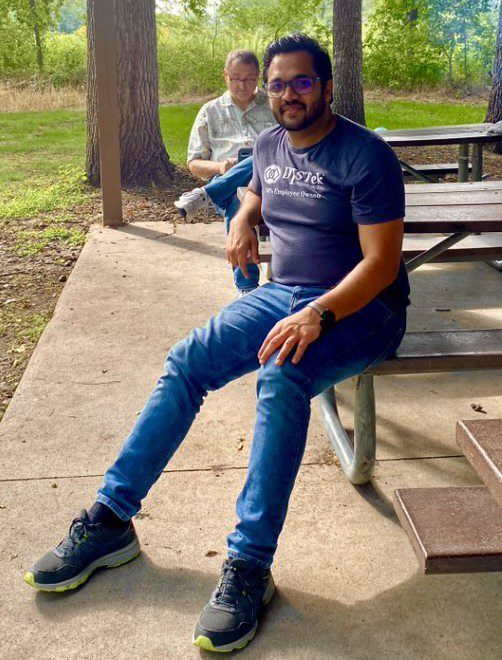DISTek U210: E2 Track is a new DISTek course offered internally to engineers wanting to learn and prepare themselves for the next engineering tier level. We use a classification of E1-E5 here at DISTek with E1 being entry level. Although, it is mostly geared towards E2s looking to set themselves up for success in becoming an E3 or senior engineer, the track also welcomes E1s wanting to learn about E2. In this class, we went over three books, had a panel discussion with senior engineers, and a mentorship project managed by the students in the class. This course also offered the benefit of networking and interacting with other DISTekians who we may not normally get the chance to work with.
In this two part series, we will talk about each of the books and the mentorship program, with the first two books being discussed by Gerardo Zamora and Chad Stapes here in Part 1, and a final book and mentorship being discussed by Michael Barnhardt in Part 2.
Gerardo Zamora:
Although it has quite the strange title, this book was about procrastination, and it doesn’t lose any time explaining “how to get going”. This book gives some tips and tricks, not only on how to stop procrastinating and get your tasks done, but also to learn how to identify what to get done, too.
Identifying what tasks we need to complete is really important, which is why I particularly liked the ideas of key result areas, key skills, and key limiting factors. These ideas allowed me to identify where to put my efforts. Simply put, key result areas are the items you need to be successful at for you to be successful at your job. For an E2 engineer like me, some examples of key result areas can be developing efficient models and code, teamwork, and expanding or gaining technical skills. Key skills are any hard or soft skills you have that will help you reach one or more key result area, like embedded C, MATLAB/Simulink, knowing how to use agile software and follow the set processes, and good time management. Lastly, the key limiting factors, is where the majority of us struggle the most. This is because how we react to and approach limiting factors is something we can control. For example, you might be blocked on a task because you are waiting for a client to respond to an email, and although we may not actually be able to make any progress on that task at the moment, we may choose procrastination and just sit around waiting. On the other hand, we can choose to knock other tasks out and stay active while we are blocked on that one particular issue.
Although this book could be in your face at times and should be taken with a grain of salt on some of the things it preaches, the author does provide value. Because once I identified the “key” components of my work, as discussed above, I could start utilizing a lot of tools provided in the book. Some of these tools are the ABCDE method for prioritization, creative procrastination, slice and dice the task, focus your attention for a period of time followed by a short break, and keeping a daily and weekly tasks list ordered by importance.
Most of the topics discussed were familiar to me, but putting them into words and providing a method for how to make progress in these areas was useful. I, for one, put a lot of effort into identifying the “key” components of my job to provide me with a “North” when prioritizing, and I have been trying my best to use the creative procrastination, slice and dice, and focus your attention methods daily.
You Don’t Need a Title to be a Leader
Chad Stapes:
The overarching theme of Mark Sanborn’s book may be obvious from the title, but it does a great job of explaining and reinforcing the idea that genuine leadership is not about recognition or individual standing in a company or group. Leaders do what they do because they know that the success of everyone around them means success for them too. I feel like this is something we can all relate to as employee-owners because this is the same basic philosophy that the DISTek ESOP represents: the success of DISTek as a whole means individual success for all of us. The book explores this theme by covering six principles of leadership, which are all framed as “powers” that a person can possess or work to gain.
One of those powers that resonated with me is “Power with People”, which is a concept that draws the distinction between someone who manages people and someone who leads people. This reminded me of servant leadership (something I learned about in DISTek U 101) which is the idea that leaders should put the needs of team members first and do everything they can to enable them to succeed.
Another power, the “Power of Persuasive Communication”, explains that communication is never really the objective, but just a tool. The real objective is to be understood when communicating. This is an important distinction, and really emphasizes that communication style needs to be tailored to the intended audience.
While studying this book, you will learn that these two principles, along with others in the book, do a great job of showing how leadership skills are valuable to any individual and are definitely critical for anyone looking to make the jump to E3.
Both Gerardo and Chad were able to learn how to take lessons from each of these two books and utilize those lessons in their daily work to make progress towards the next engineering level. Stay tuned for Part 2 where Michael Barnhardt shares his review and what he learned from the book The Power of Positive Thinking in Business and we discuss the mentorship program in the DISTek U210 course.





